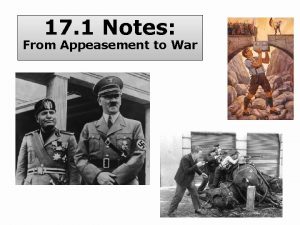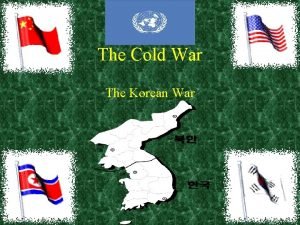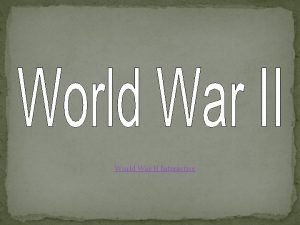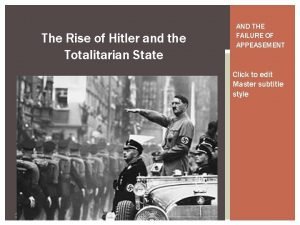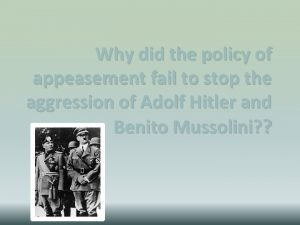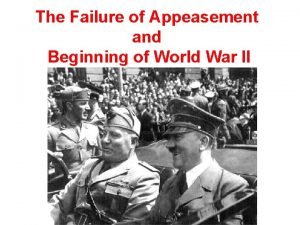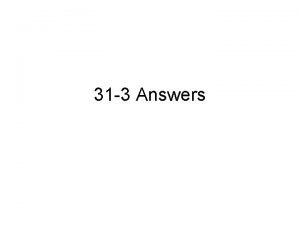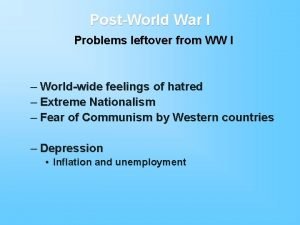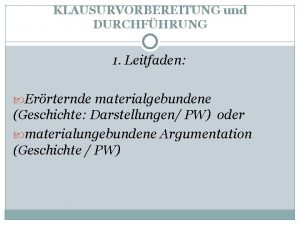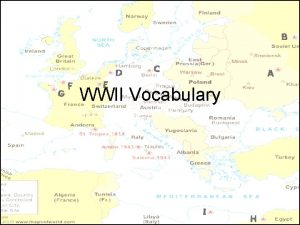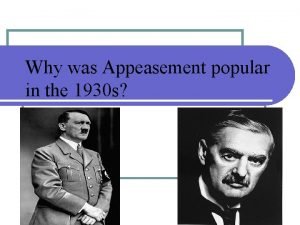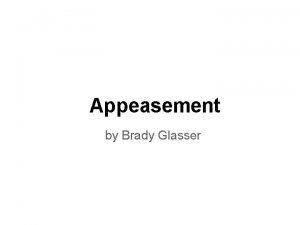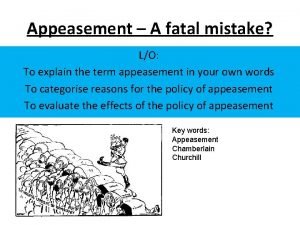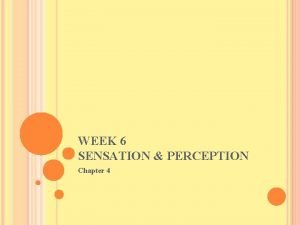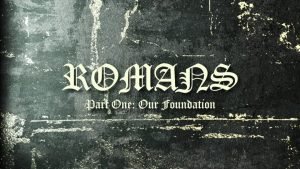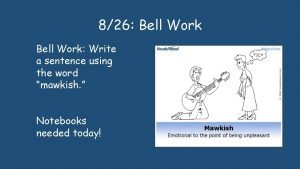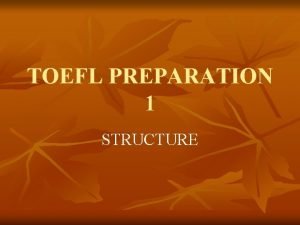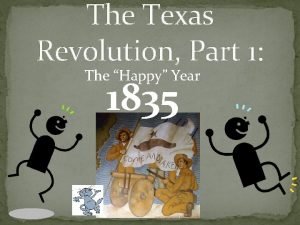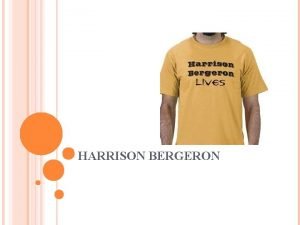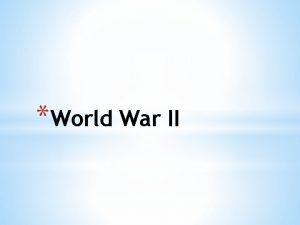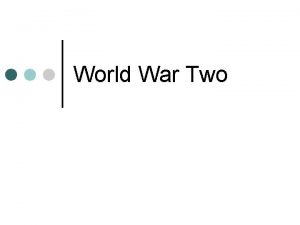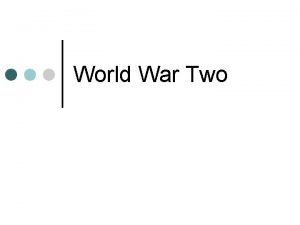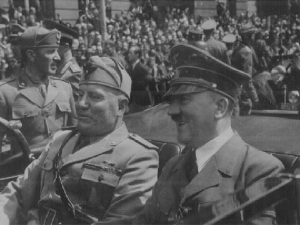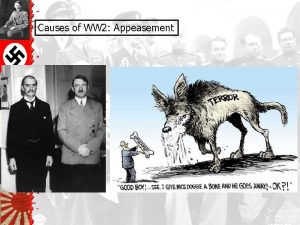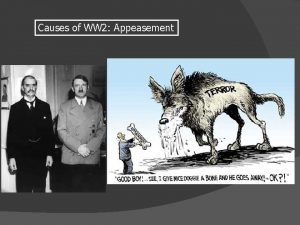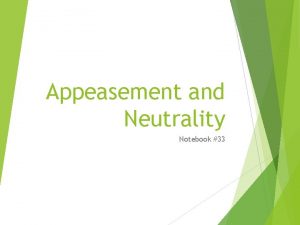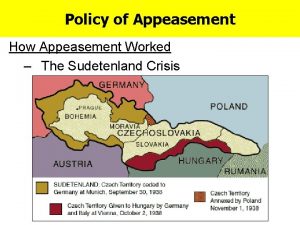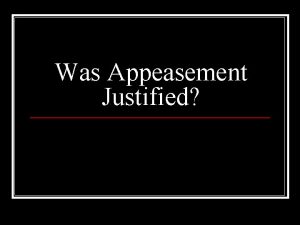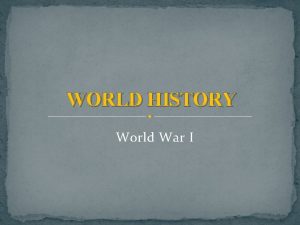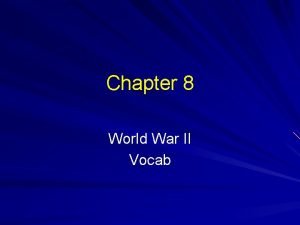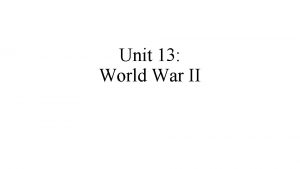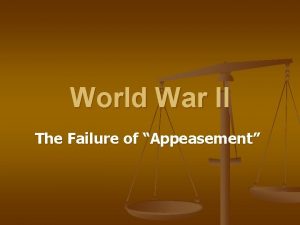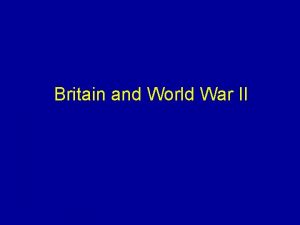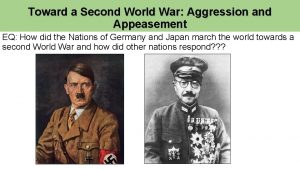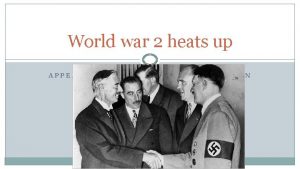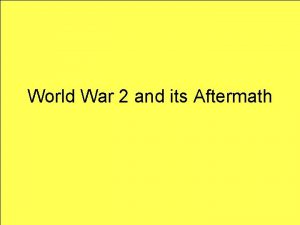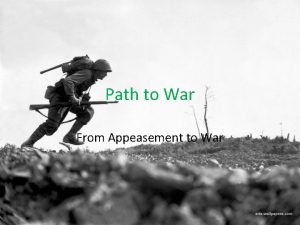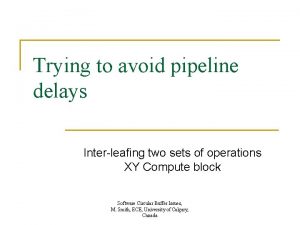World War II Appeasement Trying to avoid war


























- Slides: 26

* World War II

Appeasement Trying to avoid war with an aggressive nation by giving in to its demands Conscription Required military service Anschluss The unification of Germany and Austria (1938) Sudetenland The western part of Czechoslovakia that has a large German-speaking population. Rome-Berlin Axis Alliance between Italy and Germany – they wanted to be the “axis” around which the rest of Europe revolved. Blitzkrieg “lightening war” – the name German military attacks throughout Europe. (Hit them hard and fast with everything you’ve got). Neutrality Acts A series of U. S. laws passed in order to help keep the United States out of war. Soviet Non. Aggression Pact Agreement between Hitler and Stalin not to attack one another. (August 1939)

Axis Powers Italy, Germany, and Japan Allied Powers Great Britain, United States, Soviet Union, France (in the form of the French Resistance, led by Charles de Gaulle) Munich Conference Meeting among Hitler and the leaders of France and Britain. Hitler promises not to take over any more land in Europe. France and Britain pledge to take military action if he does. (September 1938) Battle of Britain Name given to the air battles over England between the Royal Air Force (RAF) and the Luftwaffe (German Air Force). RAF success forces Hitler to give up plans for a land invasion of England. D-day Name given to the Allied invasion of France on the beaches of Normandy, June 6, 1944. Island hopping U. S. strategy of fighting against the Japanese in the Pacific War where the U. S. attacked critical small islands and skipped over larger islands held by the Japanese in order to get closer to the Japanese mainland.

Kristallnacht “night of broken glass” – November 9, 1938. The Nazis burned synagogues, Jewish businesses and homes. Begins the purge of Jews from Germany. ghetto Closed neighborhoods where Jews were forced to live in deplorable conditions. genocide The killing of a people from the same racial, political, or cultural group. Holocaust The planned destruction of the Jews of Europe. This was Hitler’s “Final Solution. ” Concentration camps Prison camps where prisoners were worked until death. Death camps (extermination camps) Begins in 1942, Jews and other “undesirables” were sent there and received immediate death upon arrival. Auschwitz was the largest of these camps. Nuremburg Trials after WW 2 for Nazi officials charged of “crimes against humanity. ”

*Wants to build an empire *Invades Ethiopia in East Africa *The League of Nations imposes sanctions (penalties), but it does not stop the Italians. *Ethiopia annexed (made a part of another country) in May 1936. *Italy

*Used conscription (required military service) to increase the military. *Moved troops into the Rhineland (area in Western Germany near France. *Annexed Austria in 1938 (the Anschluss). *Demanded the Sudetenland in Western Czechoslovakia in 1938. *Invaded all of Czechoslovakia in 1939 (despite the Munich Agreement). *Hitler and the Treaty of Versailles

*The U. S. chose to be isolationist (turning inward and not focusing on problems outside of one’s own country). *The U. S. passed a series of Neutrality Acts prohibiting it from loaning money or selling weapons to countries at war. *The U. S. was hoping to keep from being drawn into another conflict. *Response to Germany and Hitler

*The British and French chose to appeasement as the way to deal with the Germans and Italians. *Appeasement means to give in to “reasonable demands. ” *They were hoping that loosening the reigns a little on Hitler would make him happier. *“You give someone an inch and they take a mile!” *Munich Pact (1938): Hitler agreed to stop taking additional land in Europe. *Response to Germany and Hitler

*Germany, Italy, and Japan joined together to form the Axis Alliance in 1936. *While Germany is re-claiming lost territory in Europe, Japan is continuing to invade China (1937) and the French Indo-China (1941). (French Indo-China was French controlled countries of Vietnam, Laos, Cambodia. ) * This creates two theaters (areas) of war: Europe and the Pacific. *The Beginning of a War

*Stalin is worried about Hitler. He is afraid of losing the rich farmland in Western Russia. He tries to warn the other European leaders, but they ignore him because they don’t like Communism. *Stalin decides to become allies with Germany. Hitler and Stalin sign the Soviet Non -Aggression Pact (1939) which promises the countries won’t attack each other. They also create “spheres of influence” in Europe. *Stalin and Hitler

*Poland *Despite the Munich Pact, an invasion of Poland was planned (September 1939). Germany invaded from the west, and the Soviet Union invaded from the east. They planned to divide Poland. *Rapid invasion and surprise attacks used by the Germans known as a “blitzkrieg” or lightning war. *Great Britain and France declare war on Germany.

*Norway, Denmark, *Europe Falls Luxembourg, and the Netherlands were swiftly attacked by Hitler in early 1940. *France and Great Britain sent their best troops to protect Belgium. After hard fighting, a massive evacuation of 300, 000 Allied troops occurred at Dunkirk. *France is in chaos as the Germans race their army to Paris. An armistice is signed on June 14 and Germany controls France. *In Southern France, Vichy France was a puppet government of the Nazis.

*Great Britain is the only unoccupied country in Europe. *Hitler tries to conquer Britain by: 1. Bombing Southern England (factories) 2. Air war between the German Luftwaffe and the British Royal Air Force (RAF) 3. Heavy bombing of London, known as the Blitz. (As a symbol to the British people, the Royal Family stayed in Buckingham Palace during the bombings). Winston Churchill, the Prime Minister, said the British will never surrender. RAF defeats the Luftwaffe with the help of RADAR, and Hitler does not invade Great Britain. Instead, he begins focusing on conquering Eastern Europe, including Yugoslavia, Greece, and the Soviet Union. *Battle of Britain

* The British send troops to stop the Italian advance in North Africa. The British push the Italian back to the coast of Libya. * The Germans, under the leadership of Rommel, save the Italians in Libya, but the British kick the Italians out of Somalia and Ethiopia. * The Germans work to capture the Suez Canal and Egypt because this is the gateway to the oil resources in the Middle East. *North Africa

*Roosevelt realizes that the British need help. *In 1939, the U. S. begins “cash and carry policy. ” This allows the U. S. to sell goods to the British; must pay in cash and carry on their own ships. *In 1940, Congress approves the “lend-lease act. ” This allows the U. S. to lend war equipment to any country whose defense seemed vital to the security of the U. S. *U. S. Policy Changes

*In response to the Japanese invasion of French Indo-China, the U. S. did the following: 1. Placed a ban on the sale of scrap metal to Japan (used to make weapons) 2. Placed an embargo on oil (no oil trade) 3. Would not allow the Japanese to withdraw money from U. S. banks *Japanese Attack

*U. S. Pacific Naval Fleet stationed at Pearl Harbor. *December 7, 1941 – Pearl Harbor attacked. Roosevelt calls this “a day that will live in infamy. ” *U. S. had sent all of its aircraft carriers and most of its planes to sea. *Japanese disabled 19 ships, destroyed 188 airplanes, wounded 1, 100 and killed 2, 400. *U. S. declares war on Japan on December 8, 1941. *Pearl Harbor

* After losing the Battle of *Hitler vs. Stalin (In the first few days of war, the Germans destroy most of the Soviet Air Force, thousands of tanks, and captured ½ million soldiers. Britain, the Germans turn and attack the Soviet Union in June 1941. * Operation Barbarossa: attack the Soviet Union in 10 weeks. Lose because of Russian winters and being outnumbered by the Russians. * Stalin started the “scorched earth policy” – burn everything that could be helpful to the Germans. * Battle of Stalingrad: Considered the turning point in the war. 100, 000 Germans died; 80, 000 captured when the Germans wait until winter to attack.

*German troops in N. Africa led by *North Africa General Rommel. He was known as the “Desert Fox” because he used blitzkrieg strategies to win. Germans capture most of N. Africa. *The British fight back to defend Egypt and push the Germans back to Tripoli. *In May 1942, the U. S. landed troops in Morocco and Algeria. The British and the Americans squeezed the Germans from both sides. *Rommel tells Hitler it is hopeless. Angry, Hitler removes Rommel from N. Africa. The Allies win in May 1943. Now the Allies can focus on Europe.

*Sicily and Italy *Operation Mincemeat *After North Africa is liberated, the Allies focus on invading Sicily and then Italy. They thought the Italians would be a weak opponent. *Sicily is conquered in May 1943, and after hard fighting, Allies enter Rome in 1944. *Mussolini is killed by his own people in 1945.

*D-Day *Churchill, FDR, and Eisenhower (the Allied commander in Europe) planned a land invasion of France. Stalin promised to attack Germany at the same time from the east. *“Operation Fortitude” *The invasion included 150, 000 soldiers; 5, 000 ships; 11, 000 planes and gliders. D-day was known as Operation Overlord. *The attack began on June 6, 1944.

*The Free France Movement (French Resistance) organized under General Charles de Gaulle. The Resistance blew up railroads and bridges to slow down the German response on D-day. They also spied on German troop movement, information that was crucial to the D-day invasion. *Allies went in on parachutes and on gliders behind enemy lines the night before the invasion. *The beach invasion began at dawn. *By July, more than 1 million Allied troops in France. On August 24, 1944, de Gaulle enters a freed Paris. *D-Day

*Battle of the Bulge: Hitler’s last attempt to defeat the Allies in Europe. (December and January 1945). 600, 000 Americans fought in the battle; 80, 000 killed. Germans lost 100, 000. Germany lost because they ran out of fuel!!!!! *May 7, 1945: Germany surrendered. Known as V-E day (Victory in Europe). *Hitler commits suicide (took a cyanide pill and then shot himself). *End of the War in Europe

*After Pearl Harbor, the Japanese began capturing all of the small islands in the Pacific, including Guam, Wake Island, Hong Kong and the Philippines. *General Douglas Mac. Arthur is the Allied Commander in the Pacific. *Battle of the Coral Sea (May 1942) – U. S. stopped Japan invasion of Australia. *Battle of Midway (June 1942): U. S. defeated the Japanese and destroyed many planes and aircraft carriers. *U. S. begins “island-hopping”- skipping over the islands heavily secured by the Japanese and taking back control of smaller islands. (This strategy got the Americans closer to Japan with fewer casualties, and cut those island off from Japanese resources. ) *War in the Pacific

*Battle of Guadalcanal: *War in the Pacific the first battle in the Pacific using allied forces on land, sea, and air. (lasted 6 months!, August 1942 -February 1943) *Battles of Iwo Jima (Feb -March 1945) and Okinawa (April-May 1945) were important because they had air bases that were within striking distance of Japan.

*The Atomic Bomb *President Truman decided to drop the bomb in order to save American lives from a land invasion. *The Manhattan Project was the name given to the secret development of the bomb in locations such as Manhattan, NY; Oak Ridge, TN; and the New Mexico desert. *Hiroshima (August 6, 1945): around 70, 000 killed instantly; 135, 000 final death toll *Nagasaki (August 9, 1945): 40, 000 killed instantly; 50, 000 final death toll *Victory in Japan (VJ Day): August 15, 1945.
 From appeasement to war
From appeasement to war “we are trying to prevent a world war, not start one”
“we are trying to prevent a world war, not start one” Perspectives on appeasement interactive notebook
Perspectives on appeasement interactive notebook Stepping stones to glory cartoon analysis
Stepping stones to glory cartoon analysis Why did the policy of appeasement fail
Why did the policy of appeasement fail Appeasement definition ww2
Appeasement definition ww2 Define appeasement
Define appeasement Appeasement
Appeasement Was the policy of appeasement justified
Was the policy of appeasement justified Weimarer republik zum scheitern verurteilt pro contra
Weimarer republik zum scheitern verurteilt pro contra Atlantic charter
Atlantic charter Why was appeasement popular
Why was appeasement popular Path of appeasement
Path of appeasement Was appeasement a mistake
Was appeasement a mistake Dimitri and linda are trying to learn a new routine
Dimitri and linda are trying to learn a new routine Stop trying to justify yourself
Stop trying to justify yourself 31-syllable poetry
31-syllable poetry Where did columbus land
Where did columbus land The management of hartman company is trying to determine
The management of hartman company is trying to determine Todd is trying to quit cheating
Todd is trying to quit cheating Mary is trying hard in school this semester her father said
Mary is trying hard in school this semester her father said Parent flamingos lose their intense pink coloring until …
Parent flamingos lose their intense pink coloring until … What was ida tarbell trying to change
What was ida tarbell trying to change Ida tarbell
Ida tarbell What is microfiction
What is microfiction Why was ben milam trying to rally the texan troops?
Why was ben milam trying to rally the texan troops? Bergeron warm up
Bergeron warm up
